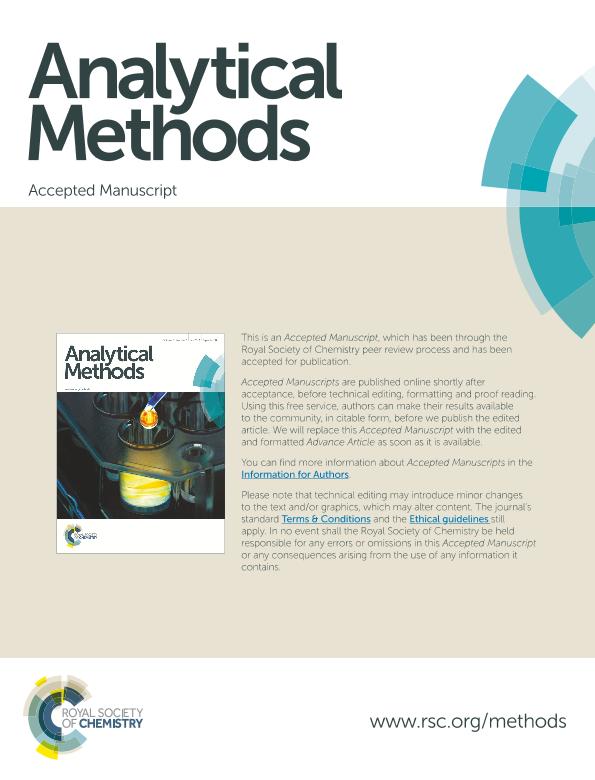Artículo
A second-order fluorimetric approach based on a boron dipyrromethene tetraamide derivative for Hg(II) chemosensing in water and fish samples
Fecha de publicación:
11/2014
Editorial:
Royal Society of Chemistry
Revista:
Analytical Methods
ISSN:
1759-9660
Idioma:
Inglés
Tipo de recurso:
Artículo publicado
Clasificación temática:
Resumen
A new fluorimetric method is described for the determination of Hg(II), based on the selectivity of a boron dipyrromethene tetraamide derivative (BODIPYTD) towards this ion, in combination with second-order chemometric analysis, to deal with matrix interferents. This is the first time that the selectivity of a mercury chemosensor regarding other metal ions is reinforced with the selectivity offered by second-order calibration, which is able to overcome the potential interference produced by organic constituents of natural or bio-samples. After the BODIPYTD–Hg(II) complex was formed, the excitation–emission fluorescence matrix was recorded and parallel factor analysis (PARAFAC) was applied for data processing. This algorithm achieves the second-order advantage and was able to overcome the problem of the presence of unexpected interferents. This method was applied to the direct determination of Hg(II) ions in environmental waters and fish muscle tissues, with minimal pretreatment steps and without the need for organic solvents. The results were successfully evaluated through a spiking recovery study in both types of real samples, which have constituents displaying fluorescence signals potentially able to interfere in the analysis. The latter fact demonstrates the excellent selectivity of the proposed method. The studied concentration range in water samples was 10–30 ng mL−1, while in fish samples it was 0.12–0.30 μg g−1. The limits of detection for water and fish samples were 2 ng mL−1 and 4 × 10−3 μg g−1, respectively, with relative prediction errors below 5%, and a sample throughput of about 8 samples per hour.
Palabras clave:
Second-Order Fluorimetric
,
Mercury Ion
,
Bodipy
,
Water Fish Samples
Archivos asociados
Licencia
Identificadores
Colecciones
Articulos(IQUIR)
Articulos de INST.DE QUIMICA ROSARIO
Articulos de INST.DE QUIMICA ROSARIO
Citación
Lozano, Valeria Antonella; Munoz de la Peña, Arsenio; Escandar, Graciela Monica; A second-order fluorimetric approach based on a boron dipyrromethene tetraamide derivative for Hg(II) chemosensing in water and fish samples; Royal Society of Chemistry; Analytical Methods; 6; 21; 11-2014; 8535-8543
Compartir
Altmétricas




